50 Parting Thoughts From the 2023 U.S. Open

Nature abhors a vacuum. So does tennis. This marked the first U.S. Open without Roger Federer and Serena Williams and, great as they were, the sport persisted just fine. Coco Gauff broke through and won the women’s title, likely the first of many. And a day later, Novak Djokovic won his 24th major. And plenty else happened as well. Some jottings, putting a bow on the 2023 U.S. Open …
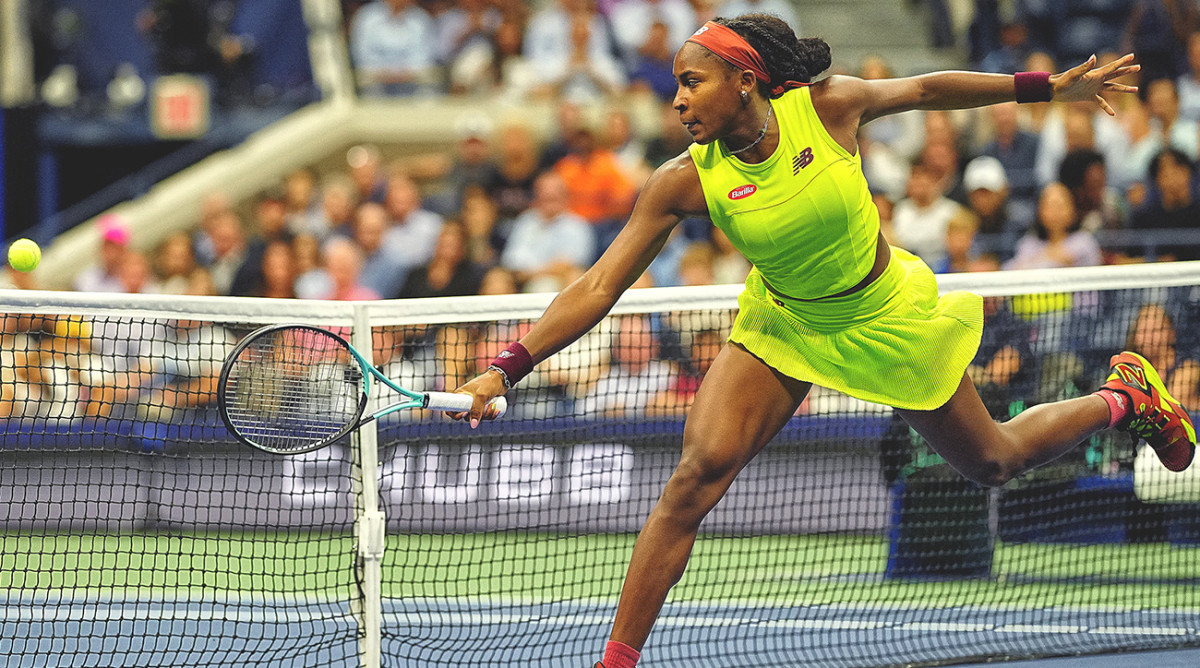
1. Gauff is the 2023 U.S. Open women’s champ, and she simply owned the tournament. That she seized the final by, ultimately, winning ugly—defending and out-thinking and letting her opponent make 46 errors—was fitting. Her ascent was never an “if” and now is a “when.” You could ask a dozen people to name her most impressive attribute and get 12 answers. We’ll go with her poise—in third sets, on big points, in the interview room. Navigating a coaching adjustment while honoring her parents. She projects such self-possession and awareness and a casual confidence. She is 19 going on 39. People of a certain age want to toast her parents as much as they want to toast her.
2. Djokovic, the new world No. 1, is your men’s champion for the fourth time here and the 24th time at a major. We’ve just about exhausted the store of superlatives, but brutal, efficient, precise and physical all apply. And, little as we talk of Djokovic’s age, at 36, he is the oldest men’s champion. The arc of tennis history is long. Djokovic is still unspooling.
3. Aryna Sabalenka reached the semifinals of all four majors in 2023 and leaves this tournament ranked No.1. And she is entirely too honest with herself and her emotions, not to leave feeling bittersweet. In the semifinals, she stole a win. In the finals, she let a win get taken from her.
4. Daniil Medvedev did himself proud, reaching the final with effective Octopus Tennis, punctuated with a fine win over Carlos Alcaraz in the semis. In the final, he couldn’t rekindle the magic from 2021 and fell in straights.
5. Box Office Ben Shelton was another of the tournament’s breakthrough performers. In reaching the semifinals, he has now won more matches at majors in 2023 than he has tour-level matches. He’s already a top-20 player. And he’s still learning point construction and, as Andy Roddick put it nicely to me, how to use his array of pitches. We were talking about the chaos some players create. Here’s another example, how does an opponent say to their coach, “Can you simulate Shelton? I need to work on returning those 149 mph lefty serves?”
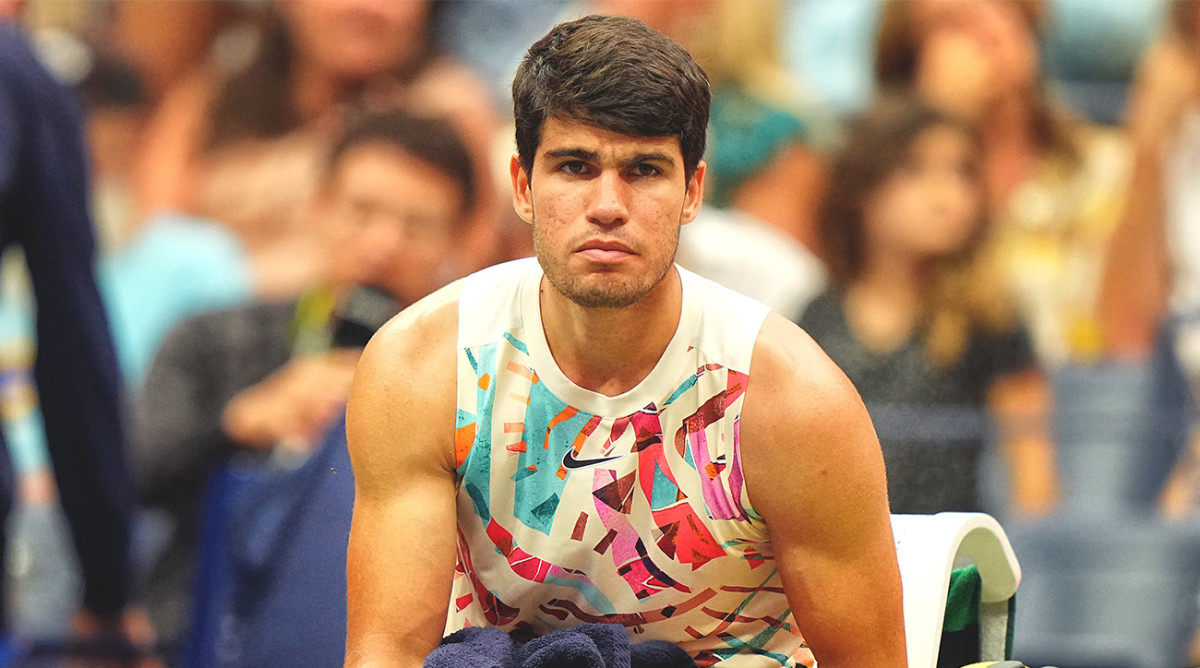
6. Carlos Alcaraz did not defend his title. He did himself proud, reaching the semifinals—without much in the way of being tested—but then ran into a poised and precise Medvedev. No panic. No shame. But no Djokovic-Alcaraz for the third straight Major final. And good for him for—as of this writing—remaining committed to Davis Cup.
7. Madison Keys reached another U.S. Open semi, won the first set 6-0, and then fell to Sabalenka 0-6, 7-6, 7-6, a scoreline you don’t see every day (see below.) It can veer on the trite when athletes lose heartbreakers and we (and they) talk about “taking positives away from the experience.” But Keys ought to be heartened to know that she is still capable of winning 11 sets at Majors and bringing this level of unanswerable power to the party.
8. Initially, we resisted, but the quick weigh-in on hand-up-gate is this: everyone wins. Djokovic made a statement. (“I’m not done yet. And I’m putting the kid in his place.”) Shelton made a statement, both showing himself worthy of Djokovic’s attention/annoyance and, with the cryogenically frozen handshake, showing that he can defend himself. The fans got some aggro. Social media got its chum. Ultimately it was innocuous. Tennis needs more of this, not less.
9. In the men’s doubles event, Rajeev Ram (USA) and Joe Salisbury (GBR) won their third consecutive U.S. Open men's doubles championship, defeating Rohan Bopanna (IND) and Matthew Ebden (AUS), 2-6, 6-3, 6-4. Ram and Salisbury are the first men's doubles team in the Open Era (since 1968) to win three straight U.S. Open titles. All credit to Bopanna for this act of sportsmanship. And all credit to the chair umpire for explaining to the crowd what had happened.
10. No. 16 seeds Erin Routliffe (Roll Tide) and Gabriela Dabrowski beat No. 12 seeds Laura Siegemund and Vera Zvonareva to take the women’s title.
11. The mixed doubles draw generated an outsized amount of attention, not least from the lefty-lefty team Townsend and Shelton. And though the world’s No. 3 singles player reached the final, in the end, little known shotgun marriage met-at-the-signup-desk team of Anna Danilina of Kazakhstan and Haari Heliövaara of Finland defeated top-seeds Jessica Pegula and Austin Krajicek to win the title.
12. In the girls, Eighteen-year-old American Katherine Hui, of San Diego, won the singles title on Saturday, defeating Tereza Valentova, of the Czech Republic, 6-4, 6-4. The 2023 runner-up at the USTA Billie Jean King Girls’ 18s National Championship, Hui will begin her freshman season at Stanford this fall. In the boys, Joao Fonseca of Brazil beat Lerner Tien (who payed Frances Tiafoe in the main draw). The sun rises in the east. The world spins. Colette Lewis has your junior results.
13. Back to Coco. She was the one on the court, paying the tax of expectation. She did the work and executed her duties to perfection. But Brad Gilbert comes in for heaps of praise. There are now enough data points to chalk the success up to causation and not correlation. Gilbert now has coached four players to U.S. Open titles; and since he joined Team Gauff in July she has won big, bigger and biggest. Andy Roddick explained that Gilbert’s superpower is simplifying complexities. Which is precisely what Gauff needed.
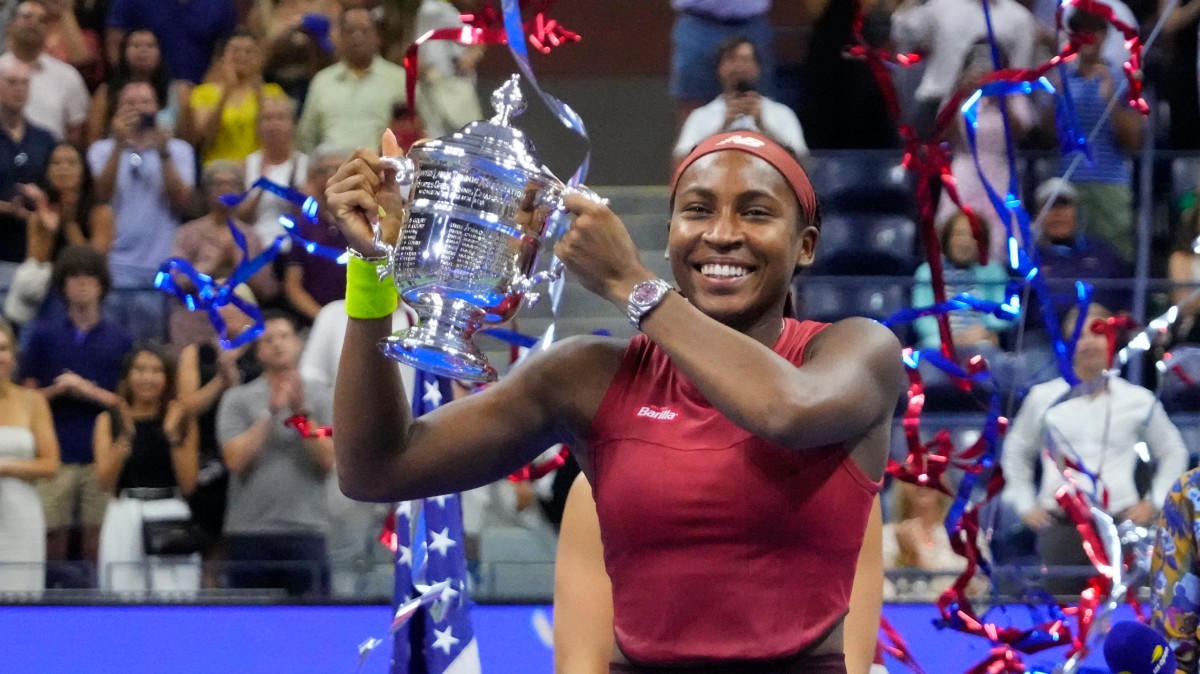
14. As we said at Wimbledon when the End Fossil Fuel activists threw confetti on the court, interrupting sporting events (and scaring athletes) isn’t a great way to draw sympathy and credibility to your cause. On Thursday night, the dude who glued himself to his seat ended up interrupting the women’s semis sessions by 49 minutes.
The irony: his cause features prominently in tennis’ (sport’s? humanity’s?) future. This issue, of course, has entered the culture war maw, which means any reference will trigger clown emojis and “it’s just weather.” But the data is the data, and while Medvedev’s prediction of players dying on court might be extreme, so is this heat. Your serve, tennis.
15. A tip of the ballcap to (Futures) Marketa Vondrousova. That Wimbledon title is suddenly looking less surprising. She reset, got a commemorative tattoo and reached week two. Clearly compromised by an arm injury—she attributed it to the tennis balls—she lost to Keys. But she’s in the top 10 now and it’s not by fluke. They may make for fun storylines, but truth is, tennis doesn’t really benefit when a player makes a “dream run” and then wakes up, regressing to their usual level, seldom to threaten again. Not the case here.
16. Strange event for Iga Świątek. The defending champ and No.1 seed played well for three rounds—certainly better than 2022 when she won the damn title—and took the first set against nemesis Jelena Ostapenko. Then … she retreated like the Homer Simpson meme. Anyone can get hit off the court by Penko, tennis’ great chaos agent. But Świątek losing 6-1 in roughly the same time it takes to read this sentence? That is unworthy of a No.1 … who is now a No.2.
17. It’s-so-crowded-no-one-goes-there-anymore* department … many (many many many) of you complained about the crowds and the lines/packed courts even to watch obscure lop-sided matches. It beats the alternative. The USTA ought to put on a third day match at Ashe, which would ease foot traffic on the grounds. But if attendance were sparse and seats were empty, we’d really have a problem. On the first Monday, the U.S. Open set a single-day attendance record with 72,957 fans. Two days later it was eclipsed with 50 more fans (73,007) who came through the turnstiles.
*Speaking of Yogi Berra, his eponymous museum in New Jersey currently has a tremendous Billie Jean King Exhibit on display.
18. The WTA announced their year-end final—the tour’s flagship event— will be held in Cancún. This regrettably late announcement came after much debate and division and a rejection (or one-year delay, anyway) of a bid to go to Saudi Arabia. We can save a discussion of tennis’s Saudi dilemma for another time. But credit to the WTA —and the WTA Ventures, and various commercial partners—for soul-searching, asking itself pointed questions and considering more than mere dollars. And while a lot of you were surprised and disappointed by King’s stance of “engagement” with a country that, while progressing, still ranks among the world’s most repressive, if she and Martina/Chris (who were outspokenly opposed to Saudi Arabia) don’t agree on every action item, that could be spun as a sign of health.
Before getting to the larger Saudi question and whether Cancún is a one-year stopgap before a multi-year deal with Riyadh…The PTPA has been disappointingly absent on so many matters of substance, but here’s one player issue I can’t shake: it’s the athletes, as usual, who get screwed. They have to deal with the uncertainty and the scheduling chaos. Had/if/when this event goes to Saudi Arabia, the execs and the sports consultancy groups and the oleaginous middlemen (emphasis on men) quietly get the bonuses and dealmaking fees. Meanwhile, it’s the players who have to field the thorny questions. They have to play in front of, likely, sparse crowds. They have to go to a country—one that criminalizes homosexuality and murders African migrants and has a distressing human rights record—where they may feel uncomfortable and unwelcome.
19. The WTA and, of course, ATP head back to China this fall. We’ll see what fallout, if any, there is from the WTA’s public condemnation from 2021. We’ll see whether Peng Shuai surfaces and perhaps mingles with her former colleagues, many of whom still care deeply about her welfare. We’ll also see what the crowds look like because Chinese tennis might be at an all-time high. A record-high number of Chinese players were in the draw. Zheng Qinwen—a future top five player— reached the quarters before losing to Sabalenka. On the men’s side, Zhang Zhizhen took out last year’s finalist, Cappy Ruud. (And all praise Taiwan’s Hsieh Su-wei.)
20. While the matches played out, there sure was a lot of churn behind the scenes. We reported before the event that the Newport grass tournament is, apparently, sold. It and the Atlanta tournament will likely be folded in to fortify a Dallas 500-level event for 2025, joining other new 500s in Doha and Munich. The uncertain fate of Indian Wells hovers. Simon Briggs reported on a late September meeting in London where Andrea Gaudenzi, Steve Simon and others will resume merger (acquisition talks) between the ATP and WTA—presumably a way to present a united front in the face of Saudi petro-lucre. (Subtext: ”Can we come together, offload the United Cup, and give these guys a 1000 event before they launch a rival tour?”)
21. The good news: the USTA says it is deferring to the players on the choice of tennis ball. The bad news: players were openly critical and the defending Wimbledon champ attributes the ball to her shoulder injury.
22. She lost in round two of singles. But what a standout event for Taylor Townsend. There is no player more enjoyable to watch. Already she is on the short list of “best hands in women’s tennis history.” She is fun and kind-hearted. And is surely the only mixed doubles player to lose a point on account of a hindrance call after she dared her male opponent, “Hit me!”
23. Bravo to the team handling the U.S. Open social media accounts. This may have been the pinnacle of two strong weeks, but there were many other highlights, too.
24. Rough tournament for the No. 4 seeds. Holger Rune, who hasn’t won a match since Wimbledon, went out in Round 1 and parted ways with Patrick Mouratoglou amid charges of “ego clashes.” Meanwhile Elena Rybakina didn’t make the middle weekend, upset as she was by veteran Sorana Cirstea.
25. Tennis article of faith: “Each of the four majors reflects the host city.” So, mirroring the streets of Manhattan, it was fitting that marijuana smoke wafted onto Court 17, affecting players. “It smelled like Snoop Dogg’s living room,” Sasha Zverev reported, one of the best lines of the event.
26. Tennis fan Richard Thaler, may we have a word with you? … Someone will use behavioral economics to come up with a solution whereby injured players are not incentivized not to play hurt. It’s easy to relate. “I am in the top 100 and have earned my spot and am entitled to my $81,500 first round fee.” But it was an open secret that a good many players were hurt and took the court with no expectation of winning—but every expectation of cashing a large check.
27. Kudos to the USTA. Overall an outstanding event. Big props for the run-up week. Open practices. Free qualifying. Some top-notch social media game. Record attendance. Boo to the USTA for another clumsy draw ceremony. This is tennis’s answer to the NBA/NFL Draft: a free day of anticipatory content. Think of all the possibilities here. And the U.S. Open draw was … done virtually, absent fanfare and posted online.
28. Five players who didn’t escape Week 1 but impressed nonetheless: Chris O’Connell and his one-handed backhand; resurgent vet, Daria Saville; Xinyu Wang, Alex Michelsen, Arthur Fils and Linda Noskova.
29. From the “something’s gotta give here” department … U.S. Open again came in for criticism for the two-match night session that sometimes ended beyond midnight. Let’s inventory this: We want to keep best-of-five for the men. We don’t want to speed up the pace of play. We not only want night sessions and the $81,500 first round prize money they help generate—but we want men and women both playing a night session. Players, reasonably, won’t want to start sessions before 11 a.m., since anything earlier entails a pre-dawn wake-up. Add up all those demands and non-negotiables and you’re left with matches sometimes bleeding into the next morning.
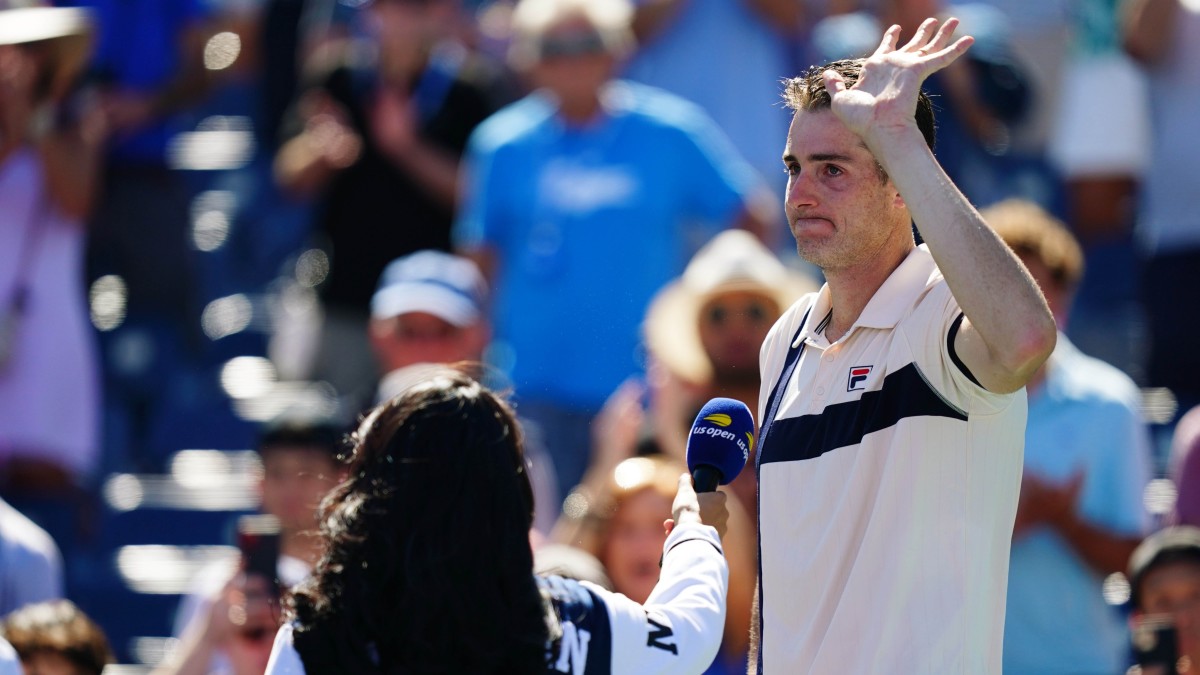
30. John Isner played his final tournament. For a player who will not end up in the Hall of Fame, he sure impacted the sport, from his ace-record to his serving as the proximate cause behind the match-tiebreaker to decide decisive sets. (Winning 70-68 will seem like tennis’s answer to 25-round boxing fights).
31. Bravo to Fiona Crawley of UNC for qualifying. And double-bravo for using this Michael Lewis story to raise the excellent point. In the age of NIL, she can’t keep her prize money, per NCAA policy … but if that same money came from a booster in a paper bag, or for some endorsement of a Chapel Hill vape shop or for some trash “influencer” post, it would be acceptable? Make it make sense.
32. Show of hands, who’s old enough to recall Break Point? (It aired on Netflix, a popular streaming service.) Through the U.S. Open, I kept thinking: This sport has so much to offer and so many subplots—some juicy, some hefty. Coco Gauff delicately balancing her parents and outside voices. The WTA’s internal divide about Saudi Arabia and the role of ethics versus money. Players deciding if/when/how to retire. A recent Wimbledon champ fighting a doping allegation. Russians and Ukrainians processing war. Box Office Ben Shelton, the son and nephew of former ATP pros.
This is meant as encouragement and not criticism: if in fact there’s another Break Point season, it would be great if the series took some bigger swings.
33. You know that new New York Times game Connections? Today’s clues: Isner’s ancestral home; Rinky Hijikata’s alma mater; Fiona Crawley’s school; Roddick’s home; Tommy Paul’s mother country; possible relocation site of Cincinnati event.** Props to North Carolina, for emerging as a tennis vital center. (That said, I’m told that Cincy-to-Charlotte relo, once thought to be all but a formality, is now a “jump ball.” The city of Mason, the county and the state of Ohio have stepped up and made a competitive bid while the Charlotte situation—including a paucity of parking—is not without its challenges.)
34. Bravo Chris “Wiod” Widmaier. This U.S. Open, his 21st, marked his final major as USTA manager of communications. Fittingly, the interview room will be christened in his honor. Godspeed..
35. Big test for the Laver Cup, which starts the week after next in Vancouver. No Federer (playing), Nadal, Djokovic, Alcaraz or Kyrgios. That’s the bad news. The good: If the event soars in the absence of the usual firepower, it’s a real sign of success.
36. Scorigami! When Martina Trevisan beat Yulia Putintseva (damn, that’s a lot of feistiness on the court at once) it marked the first time a woman won a match at a Major 0-6, 7-6, 7-6. Then in the semis, Sabalenka beat Keys by the same score. (The “rarity” of this is a smidge misleading because, until recently, the U.S. Open was the only major to play a tiebreak in the decisive set.)
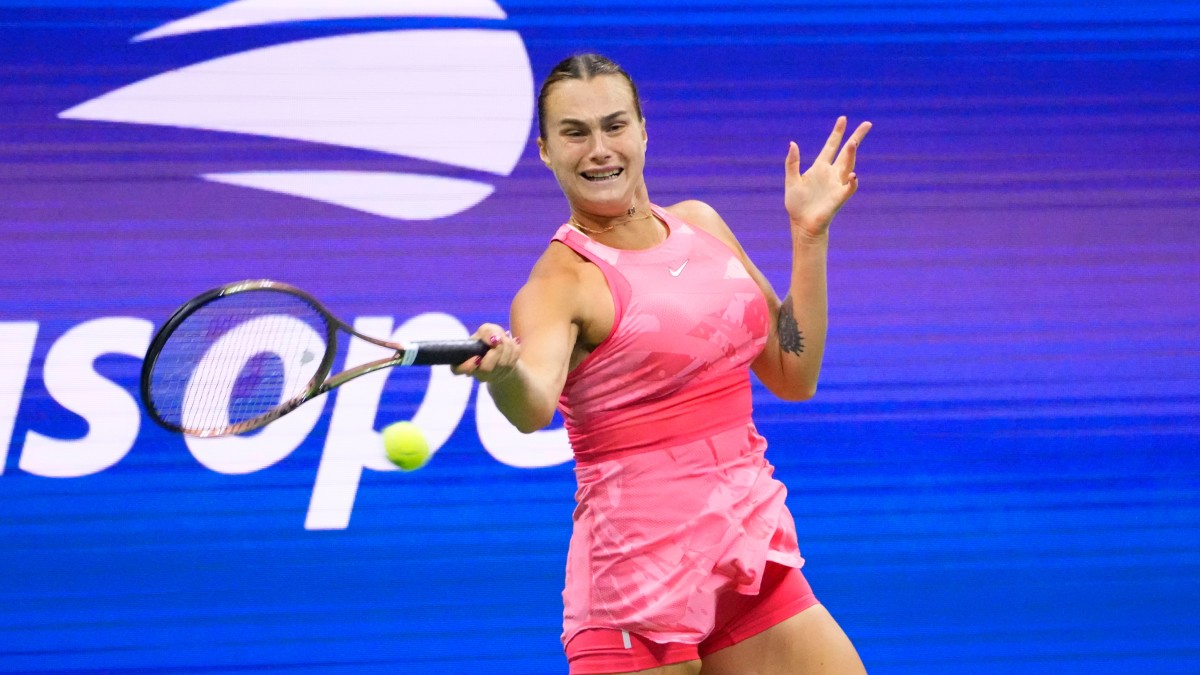
37. Speaking of … for years the citizens of Tennis-stan argued over the best way to conclude matches. Then the four majors (gasp) got together and decided to standardize the first-to-10 match tiebreak. It’s worked great. No one talks about it much. We’ve moved on. Likewise, we still hold the Old School position that mid-match coaching is unnecessary and was a feeble capitulation to the cheaters. (“Everyone is doing it anyway,” is not a response from a courageous leader.) But now that it’s here … it’s kinda lame and kinda lacking in material impact. Sure, some players (C. Alcaraz) take a lot of coaching, at least when both player and coach are on the same end of the court. Others (C. Gauff) sometimes outright contradicted the advice and even asked their charges to stop talking. Others, perplexingly, did not avail themselves (Sabalenka in the final, failing to change tactics, such as they were.) But it has not wrought the seismic change some predicted.
38. Where does Andy Murray go from here?
39. When playing conditions are discussed in sports, the fallback response goes like this: it was [windy/sunny/loud] for both teams/players. There’s no unfair edge. But by multiple accounts there was a marked difference in the speed of the courts around the grounds. In tennis, both players having to adjust to the fluffy balls or the late start time or the chewed up grass. But the stars who know they will be assigned Ashe (and only Ashe) are conferred a considerable advantage over the rest of the field. They know the court speed. They know the dimensions. They know the quirks.
40. This is becoming redundant, but yet another strong event for college tennis. More than two dozen former NCAAers in the singles draws. And doubles are all but dominated by folks who have spent time on campus. As careers lengthen, the appeal of college tennis—the reduced pressure to make your bones on tour at ages 18 and 19—increases. Special mention to the 2022 NCAA singles champs, his AND hers … Shelton and Peyton Stearns, a three-time All-American who reached Week 2 playing I’m-here-to-win tennis and is now in the top 50.
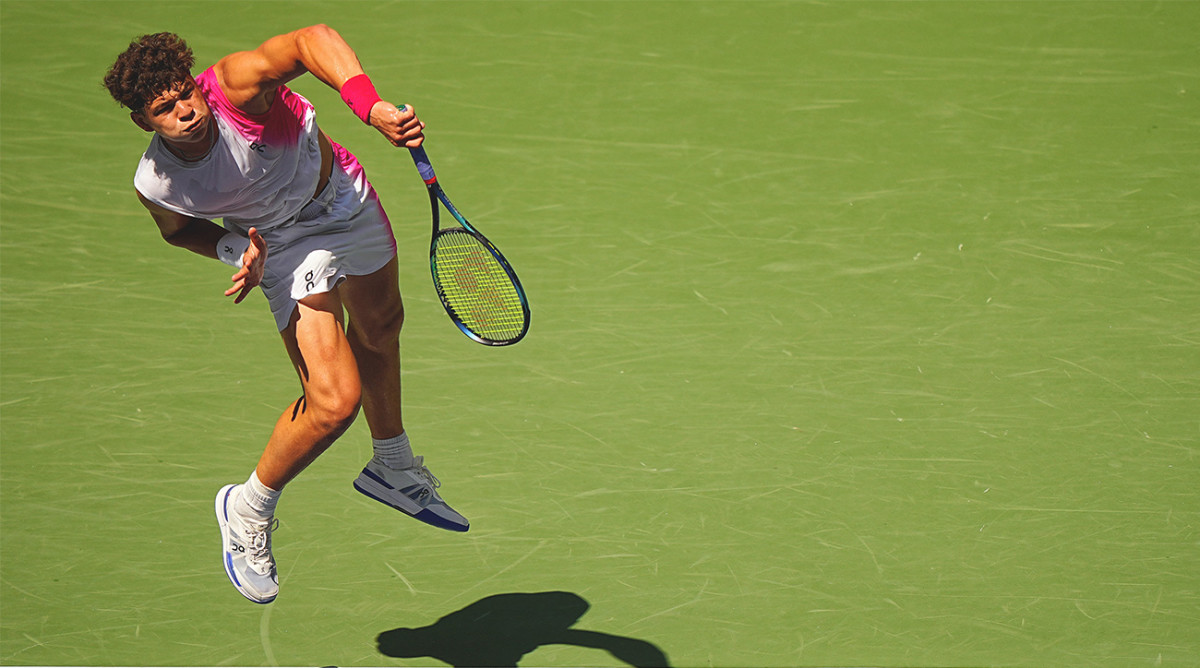
41. Speaking of college tennis, Chris Eubanks may have lost in the second round. But he continued to reveal himself as a top-flight analyst and media personality. As one reader put it, “ But if you have room, one of the [50 thoughts] revelations for me during the U.S. Open is Chris Eubanks as a commentator and interviewer. When he hangs up his tennis racket, he’s going to have a spectacular career. I can see him going the Michael Strahan route and eventually being on our TVs every morning.”
42. Barbie surpasses Frozen on the list highest grossing films! But wait, you say, weren’t movies significantly cheaper to attend 10 years ago? Same goes for tennis. We need some adjusted-for-present-value-dollars metrics. It sounds wild on its face. But of course Carlos Alcaraz just surpassed Andy Roddick in prize money. Apart from winning more majors, Alcaraz is playing in 2023 dollars and Roddick in ‘03 dollars. Speaking of…
43. First-round prize money this year was $81,500. Which is double what players made only eight years ago. That said, one day the USTA will be made to frame prize money as a function of gross revenue; and not simply issue a splashy press release giving prize money—$44.7 million!—as an impressive-sounding sum total.
44. Can we finally euthanize those excruciating pre-match interviews? Catherine Whitaker nailed it: “They are at best completely unenlightening and pointless; and at worst hugely uncomfortable.” (After writing that item, we must concede Daria Kasatkina staring into camera and using the occasion to draw fans to her YouTube channel—if her match “is boring,” which it was—was a hoot.)
45. If you missed this Washington Post piece on match-fixing, it’s worth your read. No sport does hypocrisy and conflicts quite like this one. Here’s another example. Tours and tournaments and media (including Tennis Channel) suckle at the teet of sports gambling….yet players are disqualified from these deals, and prohibited from gambling (u.e. using the actual products enriching the other stakeholders.) And while they express outrage over fixing—and both tours express sympathy for players harassed online by gambling losers—many have lucrative “data rights deals” with oddsmakers. Chefs kiss to the ITF. It has a deal with Sportradar— “reimagining immersive experience for sports fans and bettors” it gushes—which goes so far as to put the tennis logo on its homepage. Meanwhile the ITF is also tasked with rooting out the match-fixing corruption.
46. Thanks, as always, for the Tennis Channel feedback. We had a lot of fun on the pregame show, as we do at each major. And this excellent feature produced by Nitin Varma (redundant) on Ohio State football coach Ryan Day is worth your while.
47. So long, farewell … Jack Sock, CoCo Vandeweghe, Barbora Strycova. See you on the pickleball court.
48. The ESPN coverage (and therefore ratings) were impacted by the Spectrum/Disney dispute. Tennis often mistreats its fans. But in this case, tennis was collateral damage and this had nothing to do with the U.S. Open. This was about a cable company playing hardball with a media company; and a media company playing hardball with a cable provider. In this time of rampant cord-cutting, one could surmise that both sides lose. But the resolution—who blinks and capitulates—will say a lot about where this industry is heading.
49. Anyone else notice the Charlize Theron J’Adore commercials that ran on so many changeovers? Last year that same commercial was scored to Flashing Lights by Kanye. Post-cancellation? Same visuals but the same spot played under a Motown song.
50. Congrats to Ben Rothenberg on the forthcoming publication of his (unauthorized, the best kind) biography of Naomi Osaka. You can pre-order here.
Thanks everyone. Always fun geeking out on tennis with you guys. We’ll do it again in Australia.
